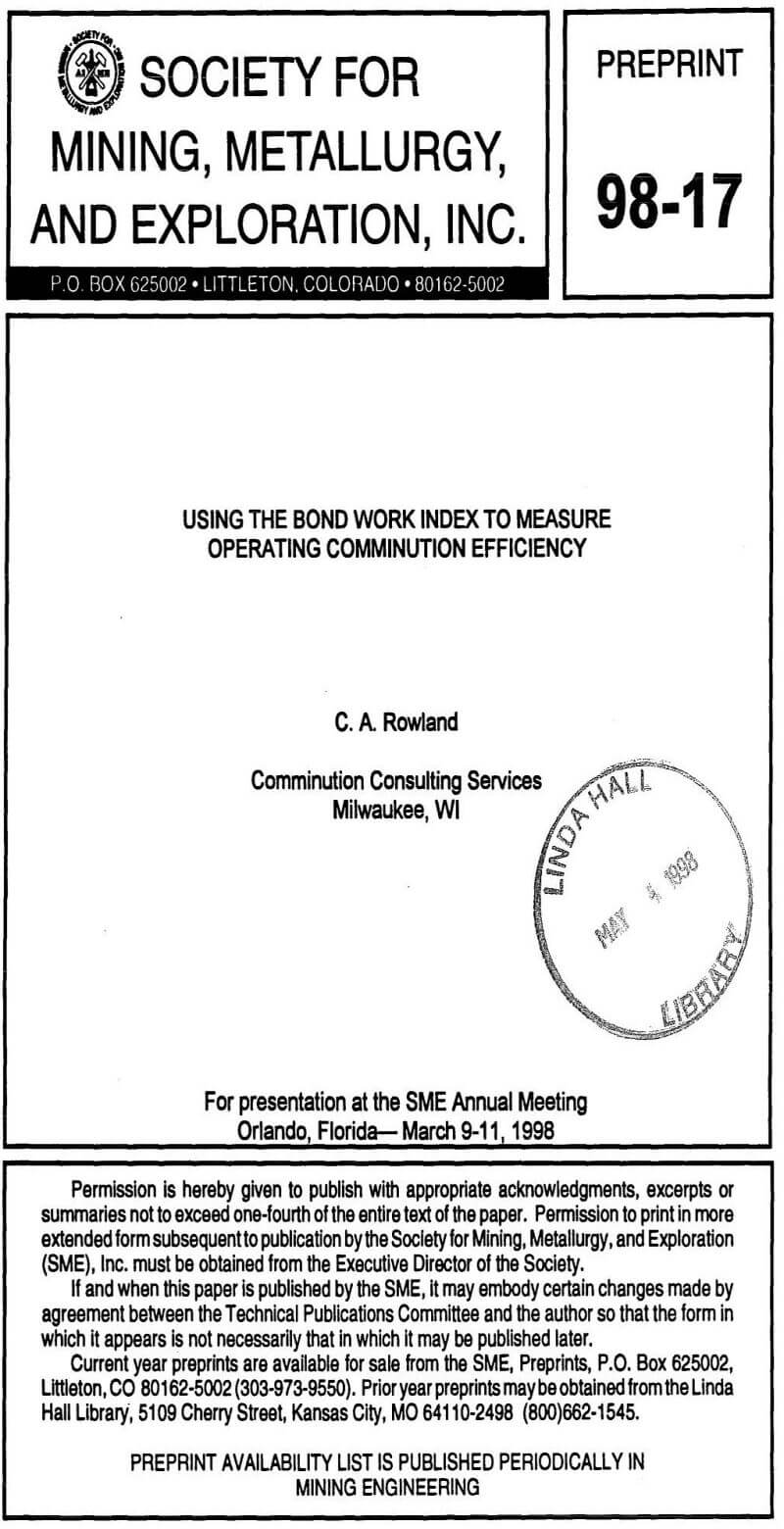In grinding, operating Efficiency compares the operating work index of a comminution machine to the Bond work index from bench scale crushing and grindability tests or/and pilot plant tests. Economic Efficiency is comparing the income from production to the planned income from production.
Energy as consumed in comminution machines and the required energy as determined, from bench scale laboratory or pilot plant tests to perform the required size reduction are the key factors in determining the operational efficiency of comminution machines.
Bond Work Indicies obtained from bench scale crushability and grindability tests or from pilot plant tests are used in the Bond Equation to determine the energy required to produce the required size reduction in comminution circuits. The Bond Equation as found in reference 5 is:
W = 10Wi/p0.5 – 10Wi/p0.5
Where:
W = kwh per short ton.
Wi = Work Index determined from crushing and grinding tests.
P = The size in microns (micrometers) that 80% of the product is finer than.
F = The size in microns (micrometers) that 80% of the feed is finer than.
When accurate mill ore feed rate in dry tons per hour, mill power draw in kilowatts, and mill feed and product size analyses in microns are available the Bond Equation can be used to measure the operation of comminution machines, reporting it as operating work index. The equation for operating work index as given in the paper “Tools of Power Power” (6) is
Wio = W/10/p0.5 – 10/F0.5
Where:
Wio = Operating Work Index as kwh per either short ton or metric tonne.
W = Measured power in kwh per either short ton or metric ton.
P = The size in microns (micrometers) that 80% of the product is finer than.
F = The size in microns (micrometers) that 80% of the feed is finer than.
W as calculated using the Bond Equation can be converted to kwh per metric tonne by multiplying it by 1.102. If the measured power for the operating data used in the operating work index equation is given as kwh per metric tonne then the calculated operating work index is power per metric tonne.
For closed circuit grinding, F is the feed to the circuit, before adding the circulating load and P is the product, after removing the circulating load.
Fred Bond defined Work Index as “The comminution parameter which expresses the resistance of material to crushing and grinding. Numerically the Work Index is the kwh per short ton required to reduce the material from theoretically infinite feed size to 80 percent passing 100 microns.” Wi and Wio both fit Fred Bond’s definition for Work Index. Operating work indices can be compared to work indices from bench and pilot scale tests run on samples of circuit feed taken for the same time period, as the operating data. By definition, both work indices cover exactly the same amount of size reduction, namely from an infinite feed size to a product size of 80% passing 100 microns.
In “Crushing and Grinding Calculations“, Bond identified correction factors that should be applied to the calculated power (W) determined by using the Bond Equation.
The operating efficiency of production circuits can be measured using the following comparison:
Efficiency = Wio/Wi x 100
When (Wio/Wi)x100 is less than 100 this indicates the circuit, based upon this comparison, is operating efficiently. When it is greater than 100 this indicates the circuit is operating inefficiently. A large difference, either low or high, could indicate that the two work indicies are not on the same basis. For operating efficiency calculations, it is necessary that the efficiency factors are applied so that both work indices, used in the comparison, are on the same basis.
Operating efficiency, based upon using operating work indices, is also a useful tool in comparing the variations in grinding mill operations such as: mill speed, mill size, size of grinding media, mill discharge arrangements, liner designs etc.

